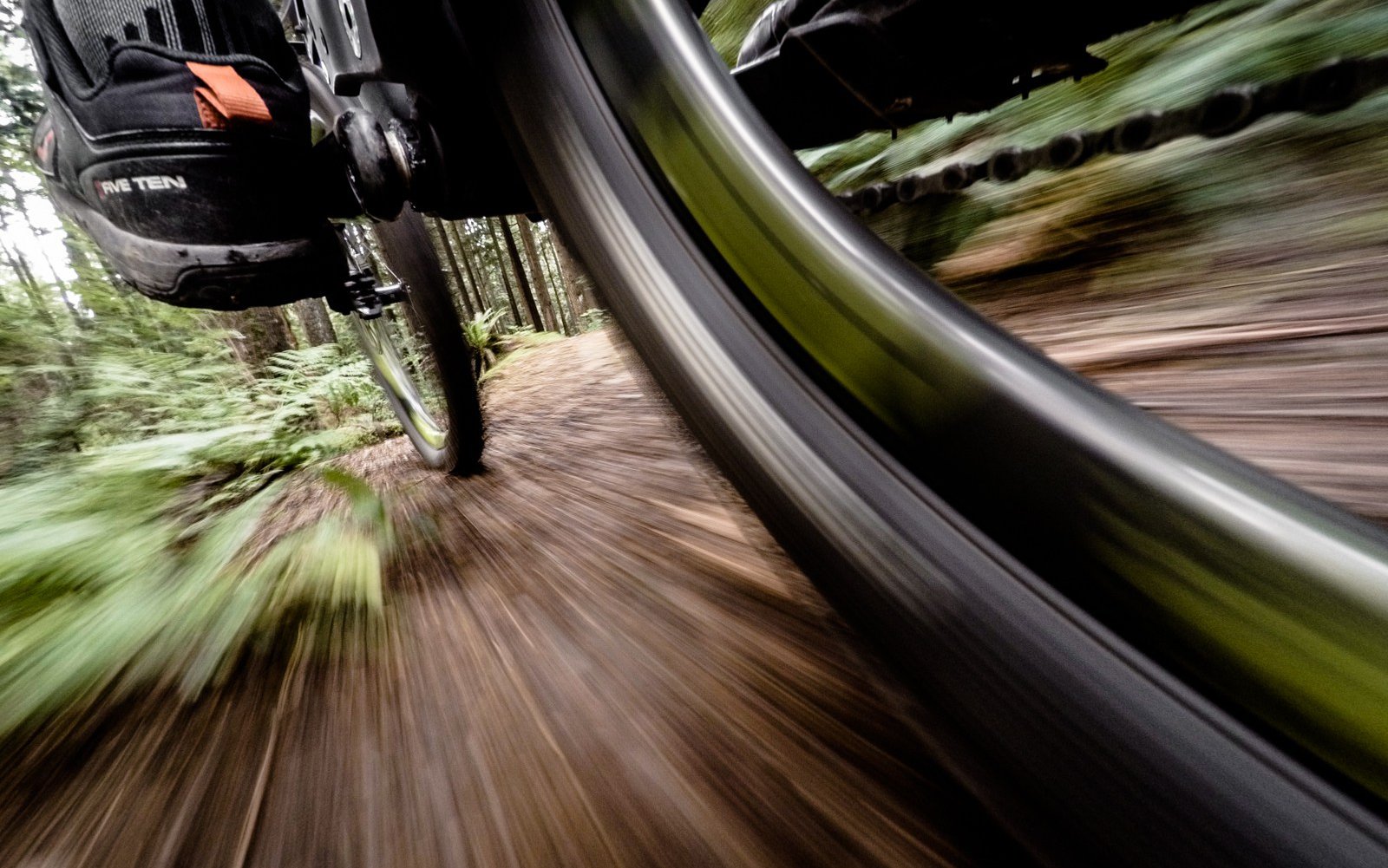
Editorial
Why Would Anyone Buy Carbon Wheels?*
I should start this by coming clean; I have a carbon fetish. I'm powerless to the pull of carbon frames, bars, cranks and brake levers. Even stem caps. Rims are a tougher sell to many but despite their exorbitant cost and several other issues (some related below) carbon rims make sense on several levels. The 6th element on the periodic table that is common to all known life, seems like the right material for the job. Carbon is a key component in graphite, diamond and graphene (the strongest material known) and it's plentiful, so how can it not be the right stuff?
*Originally published in Dec. 2017
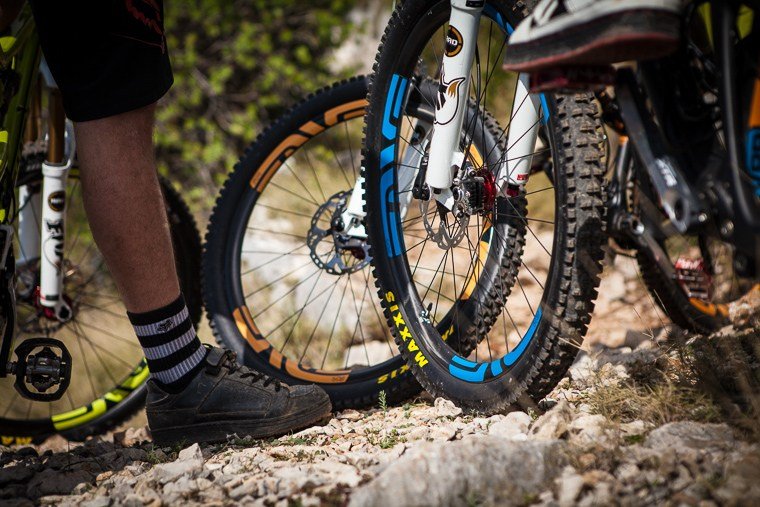
I was so enamoured by the lateral stiffness of the first Enve rims I rode (back in 2010) that I failed to notice the lack of vertical compliance. Precision is intoxicating. More recent models have a better feel for the trail.
There were some seizures and growing pains in the early history of carbon hoops, including exploding sidewalls, melting rims (this still happens), bone shaking stiffness and bait and switch lifetime warranties, but lately it seems things are starting to settle. Quality, performance, and consistency have all been on the rise. The two factors we'd like to see spiraling downwards, weight and price, have sadly remained relatively constant.
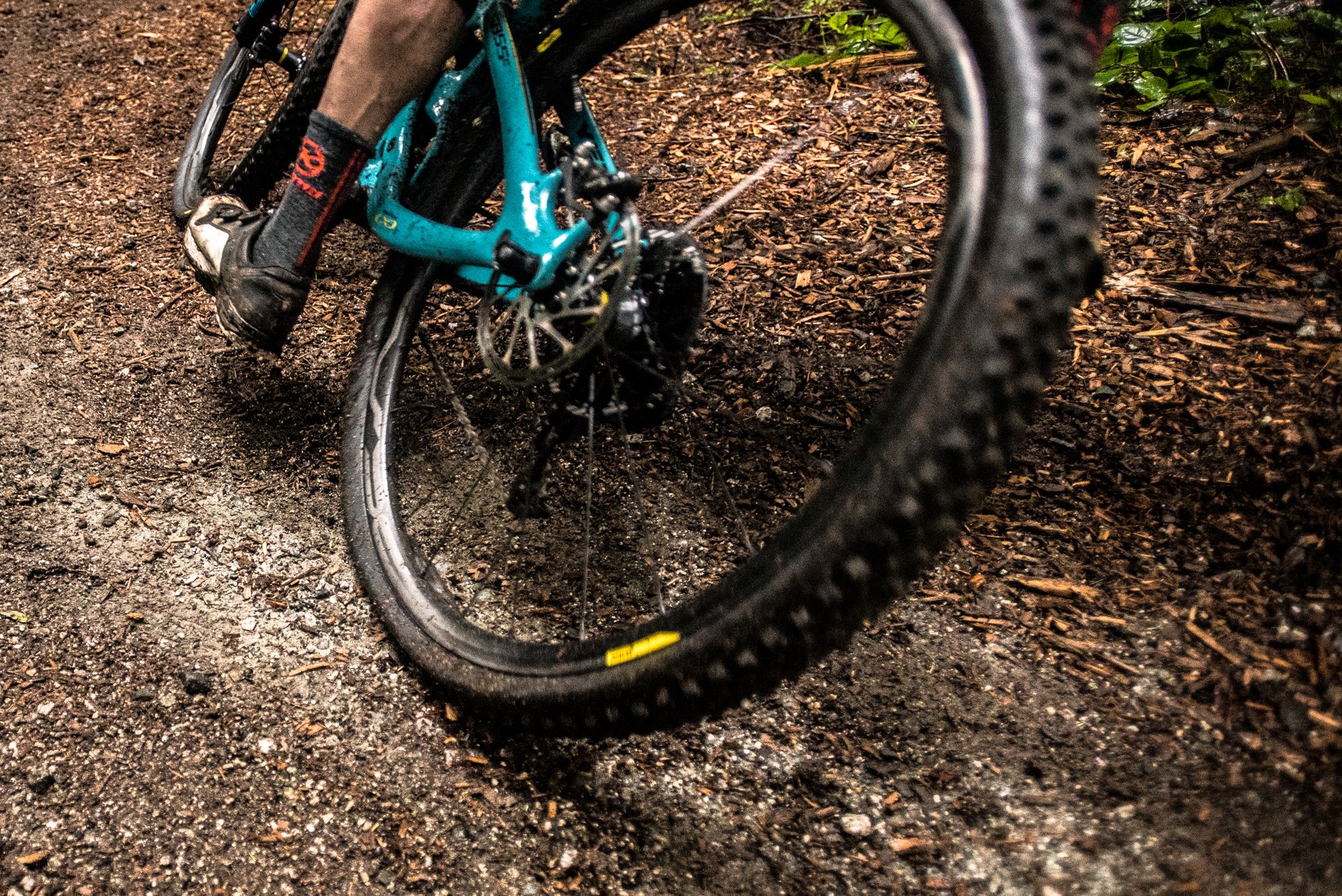
Because they look sweet? That's answer enough for some riders. Mavic's XA Pro Carbon rims under testing load with no air pressure.
Part of this infatuation relates to my experience. Thus far the wheels I have ridden have been very good. I've had one compressor-related failure while encouraging a tire to seat on an ENVE rim (huge explosion with sealant everywhere) but otherwise the performance and reliability have been excellent. Carbon is particularly good at staying true and round because unlike aluminum, carbon structures have no memory; rims don't strain to keep a circular shape because they have been laid up as circles from the beginning. Aluminum rims begin as long straight extrusions that are bent into a circular shape, often four at a time. If you have ever potato-chipped a rim you have experienced a rim trying to claw back to its unbent form. The counterpoint is that often, you can smash an aluminum rim back into rideable shape. Even one that looks like a Pringle.
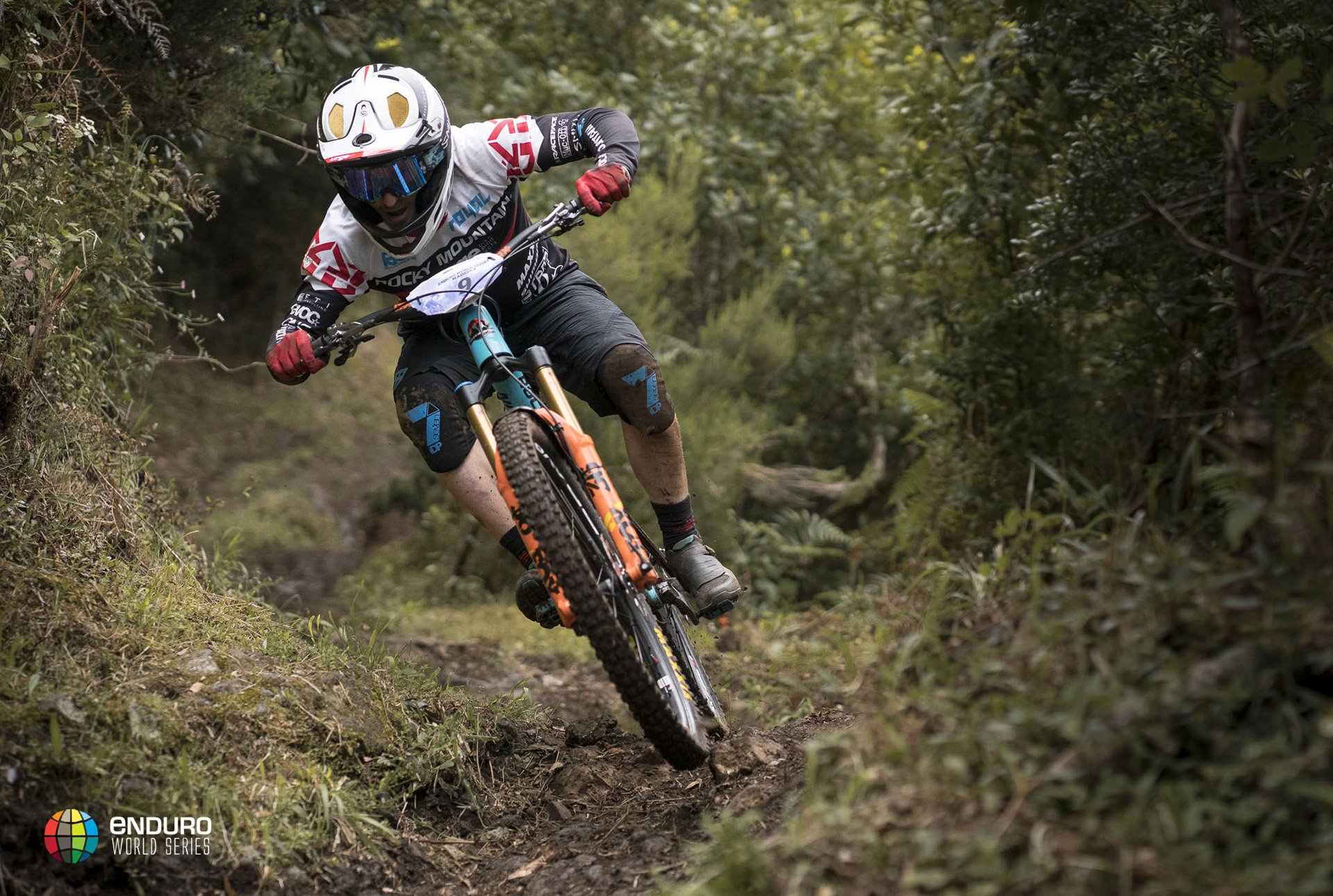
Jesse leading at the EWS Madeira before a carbon rim failure pushed back his first overall victory. Photo - Enduro World Series
Jesse Melamed discovered the limitations of carbon rims earlier this year when a failure cost him an overall win in Madeira. Jeff Bryson, Team Rocky Mtn Urge mechanic for Jesse and Remi Gauvin tells the story:
We started the season on carbon rims this year only because they (Jesse and Remi) had ridden the same wheelsets the prior year and had no issues all season. When Jesse's rim blew up on the 7th stage of EWS Madeira with a 24 second lead, all the EWS mechanics (Polar Bear - Team Yeti, Mark M - Factory GT and Mateo - Jerome Clementz) reminded me "that's what carbon does." We are now on Aluminum with Cushcore. Aluminum shows its abuse and is cheaper to rebuild. Most of the mechanics make their riders ride aluminum. Rear for sure - Jeff Bryson
Of course at the EWS level most riders and mechanics aren't paying a penny for their parts, and aluminum rims can be replaced frequently so there is no issue dealing with the usual afflictions of dents, flat spots and wobble that plague aluminum rims in abusive relationships. Jeff's point that aluminum doesn't conceal issues is particularly important for racers at the top level. The one team that has had no issues with carbon rims is Specialized because they apparently start with fresh ones ever race.
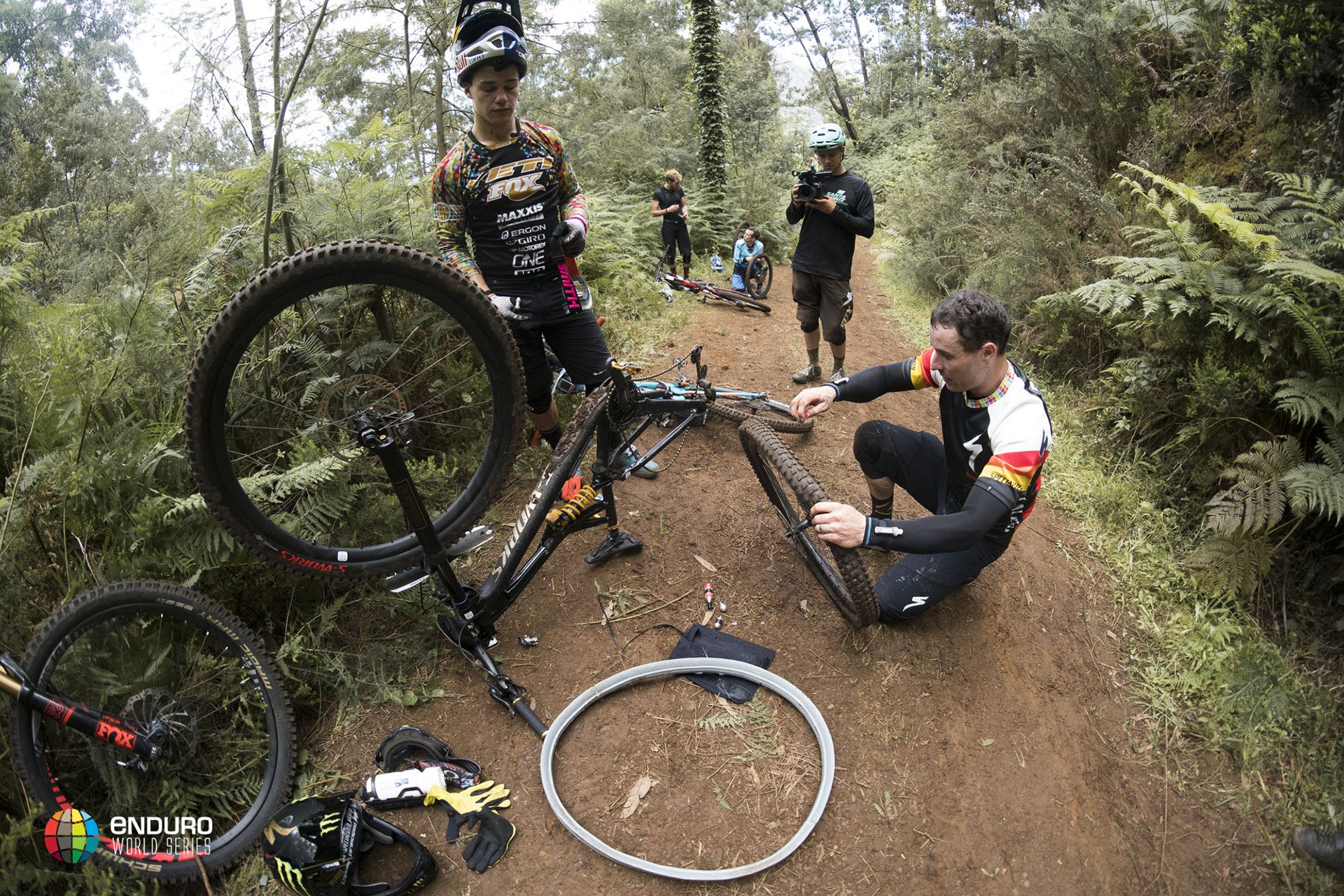
Team Specialized relies on carbon wheels but they apparently swap them before every race. Photo - Enduro World Series
So the jury is still deliberating about carbo loading for this application. For riders who put less monumental demands on their wheels, the advantages of carbon are more easily identified. You have to have strong opinions if you are going to pour your life savings into building wheels out of carbon so I asked Dustin Adams, once Canada's top downhiller and now the proprietor of We Are One Composites, a Kamloops based startup making carbon rims here in Canada, what he felt the advantages of carbon hoops are:
The main advantage is an increase in wheel Stiffness for the same or lower weight compared to an aluminum rim. With the main advantage being the increased lateral stiffness for better tracking, improved steering feel, better cornering. The Radial stiffness is also increased, but we have engineered our rim profile and layup to minimize this increase, so it doesn't have a harsh to ride feel. - Dustin Adams, We Are One Composites
I posed the same question to Nic McCrae, the carbon engineer behind Santa Cruz's recently released Reserve Wheels.
Carbon rims won't deform unless they break, which keeps your wheels dished and true way better than an alloy rim. Also, the extra stiffness makes for a more predictable and precise ride. And especially with wide rims, it keeps the wheel light. They're expensive, can't lie about that, but a properly made carbon rim will last forever, is as close as feasible to a maintenance-free wheel, and give you a lot of bang for the buck. - Nic McCrae, Santa Cruz Bikes
It's an expensive day when you hit something too hard or too sharp with your fine carbonium hoops. e*thirteen's rims on their own range from US$499-$549 while a similar aluminum version is $79. Carbon frames are certainly more expensive than aluminum but not almost 7 times more expensive, so putting some thought into your buying decision is essential. But what makes carbon rims so pricy? Again Nic McCrae had some info for me:
Two main factors here: raw material cost and because they are hand-made. Carbon prepreg's cost is in the tens of dollars per pound, while aluminum is the single digit $/lb. It takes over an hour to lay-up a rim in the layup tool, even using the semi-automated equipment SCB developed, and then it needs over an hour in a heat press, demolding, deflashing, drilling, finishing, etc. Many many man-hours per carbon rim, opposed to minutes to form and weld an aluminum rim. Nic McCrae, Santa Cruz Bikes
There are some pros and cons. No shocker here. A few more factors are that tubeless works better with the hookless bead of carbon rims (fewer burps) and the accuracy of the structure means you are more likely to get a good seal from the beginning. Because carbon doesn't sustain dents or flat spots the seal is again going to have better integrity.
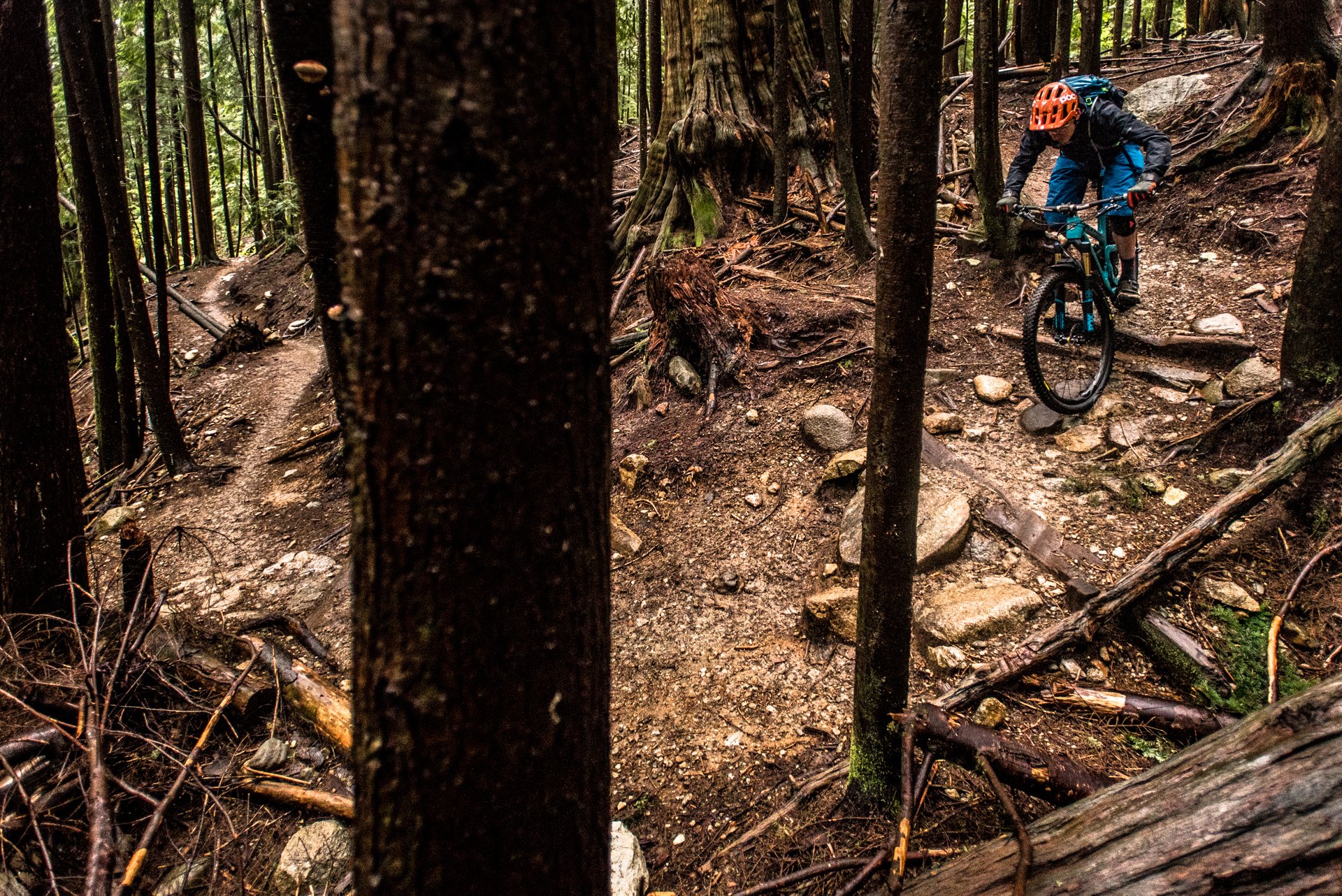
I've been impressed with the Mavic XA Pro Carbon wheels I've been testing lately. But you hope to be impressed for US$1800 a pair.
So they are light and strong and low maintenance. The bad news is that when they do fail, as they did for Jesse, it's often catastrophic. The short history of carbon rims reminds me of the first round of compact florescent bulbs. Dumb consumers like me were told they would last 20,000 hours and so we paid a premium. Unfortunately that was bullshit. I had a dozen that didn't last a year because of course they hadn't actually tested them for the predicted lifespan; that answer was pulled directly out the marketing departments asses.
When Easton launched their Haven Carbon wheel program they came with a sweet lifetime no questions asked warranty. Unfortunately that warranty was cancelled when RaceFace purchased Easton. No amount of testing is going to prepare rims for every real world situation and the only way to know with certainty how a product will perform for consumers is to have thousands of riders push them to the limit.

The Norco Range Carbon I tested recently came with (gasp!) aluminum rims! I had no issues with performance or durability for the duration of the test.
Should you buy carbon-rimmed wheels? If you are on a tight budget the answer is no for me. If you are fussy about your wheels being round and true you might consider learning to build wheels. It's not that hard and lacing is easy if you re-use spokes (just tape the new rim to the old one and transfer the spokes over one at a time). You are going to spend between $1000 and $2500 for your carbon wheels in American dollars. You can get a really nice aluminum wheelset for $500 and replace the rims several times before getting anywhere near the price of the cheapest carbon set.
Another reason to avoid carbon is ever-changing standards. Anybody who threw down for an expensive set of non-Boost 650b wheels is unlikely to look back fondly on that purchase. And it's even worse for anyone who picked up a 26" set.
If you happen to be someone who is content to throw money at mountain bike gear then I highly recommend getting down with some hand laid rims. Many riders find them virtually maintenance free because they resist any deformation until they reach the breaking point. The regular truing required of aluminum wheels rarely needs to be performed in my experience. Another positive is the compliance built into recently released carbon rims. Lately I have ridden Mavic's XA Pro Carbon, e*thirteen's TRSr SL and Santa Cruz's Reserve wheels and they share excellent lateral rigidity (no newsflash here) but they also provide impressive compliance leading to improved comfort and grip.
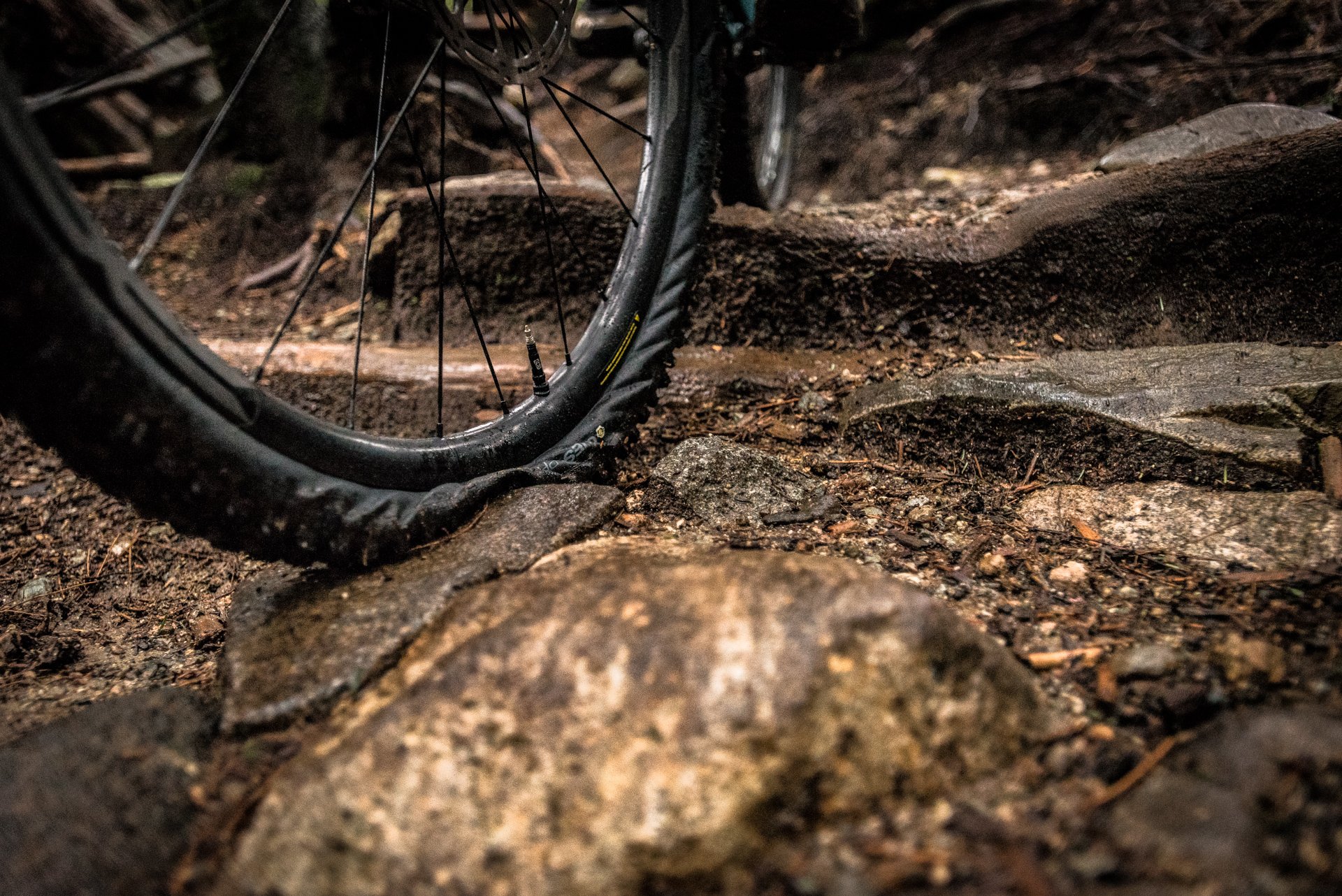
Cushcore even protects your rims when your tire loses all its air. Riding out is a comfortable calming affair.
A proviso in all this for me is that I am vastly more comfortable on wheels that retail for over 3k Canadian with Cushcore inserts between my carbon and the earth's bony bits. If it was only the peace of mind protection provides that would be one thing but the performance advantages of Cushcore make it automatic for me.
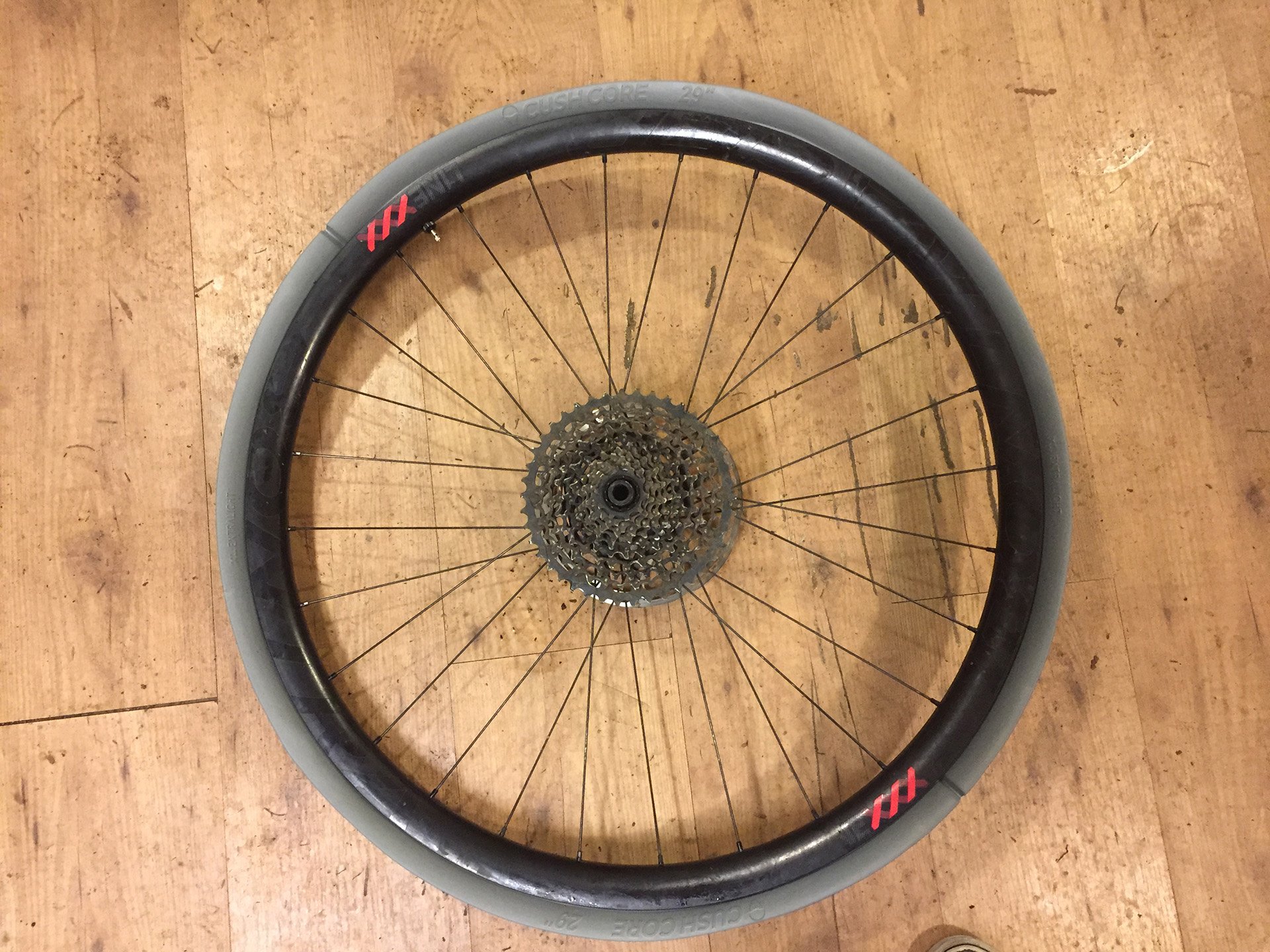
Protecting your carbon (or aluminum) holdings while boosting performance? Cushcore has delivered for me thus far.
I'd like to be able to tell you that my tea leaves indicate standards are going to settle down and that carbon rims currently being produced are going to outperform the previous generation by several parsecs (a country mile isn't enough). Anecdotally at least I have a degree of confidence about the latter statement but I wouldn't bet much on standards levelling out, so think carefully before blowing a pay check on wheels for your bicycle.



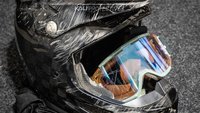

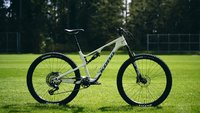

Comments
dtimms
7 years, 9 months ago
One thing that seems odd to me, you buy 3k rims and then have to spend another 100 on inserts so they don't break? Man, I will take my aluminum rims.
Reply
Shoreboy
7 years, 9 months ago
The Cushcore inserts also add ~250g+ to each of your wheels.
Reply
Cam McRae
7 years, 9 months ago (below threshold) log in to show
But you can easily save that by running lighter tires. I'm running some light Mavic Quest Pro XL and with Cushcore they perform better than the substantially heavier Minions they replaced, and the trail feel is amazing.
Reply
Cr4w
7 years, 3 months ago
I don't really understand this logic. Even with Cushcore in your need sidewalls of a certain thickness to resist tearing. I've been running EXO tires for years and only torn one tire out of maybe a dozen (wow that gets expensive when you tally it up). I can't imagine using anything less.
I guess if it allows you to get from a DD/DH casing to an EXO then it makes sense.
Reply
Meister
7 years, 3 months ago
I call B.S. on that Cam. I sucked up all the hype of Cushcore. My First go on them at the Squamish enduro race on the first stage I some how broke the valve stem lost air pressure and destroyed my ENVE rim. I have since put them in some ARC 30 rims and they have work well but at 20 psi front and 22 psi rear. Trying to get the tires off after a couple of months was an absolute f'n nightmare. I'm staying with no cushcore on my new carbon rims and carrying tubeless plugs and running 22-24 psi. Have had zero issues.
Reply
Cam McRae
7 years, 3 months ago
It's entirely possible, even likely that you are harder on equipment than I am. Which doesn't exactly make my statement B.S. ;) That and the number of EWS (and DH) riders who are using Cushcore without any sponsorship money is telling.
Individual results may vary, as they say. Pretty much anything can break at any time given the right (wrong?) circumstances. I don't think you can build a thesis based on your one failure.
I am getting better at the removal and install but you are right - it can be a bitch.
Reply
Shoreboy
7 years, 9 months ago
Just to play devil's advocate, I could also put CushCore in my aluminum wheels, use the lighter tires, and get the same trail feel. All at about 1/5th the price. The weight difference between Al rims and Carbon rims is a dead heat.
Reply
Tehllama42
7 years, 3 months ago
It wouldn't be the same feel - but you'll get a lot of the muted/damped sensation of good carbon, plus the closest to bulletproof combination for going kamikaze mode through boulder fields, and still at a lower net price. The only downside is weight, but there's a reason a lot of gravity racers run this exact combination... it just isn't an incredibly sexy one, so you don't see tons of advertiser dollars getting thrown at promoting the concept.
Reply
Just Askin
7 years, 3 months ago
Really? By the time you drop the PSI to 16-18, and stick a foam liner in there - you're going to tell me in a blind test you could tell whether you have carbon or aluminum hoops? Really? I'd say while you're rolling on a marshmellow cloud with 16-18 PSI and cushcore, there is no way you could tell the difference.
Reply
Lowcard
7 years, 9 months ago
Who does that? Seems like they just don't have enough of the right type of layers in the nipple bed.
woops.... just realized you were talking about foam inserts hahaha
Reply
Timer
6 years, 2 months ago
I also don't get the rationale behind running cushcore "because" of carbon rims. If anything it should be the other way round. If carbon rims are so much tougher and have "lifetime"-warranties, one should go without cushcore and not worry about the rim.
Reply
Tim Ambler
7 years, 9 months ago
One nice thing about carbon is that depending on how they break (full explosion vs. a crack) they might actually be repairable. I was experimenting with low pressures on my Ibis 941 wheels and found the cracking point on my rear rim. I was initially crushed by my investment going down the tubes but Roberts Composites was able to repair and I've been riding the same rear for about two years now. Had to pull out some spokes temporarily and get it re-tensioned but it a full rebuild of the wheel wasn't necessary. Try that with aluminum.
Reply
Cam McRae
7 years, 9 months ago
Nice one Tim. I have a rim that is waiting for an assessment from Rob. I've seen some great work done by him.
Reply
Perry Schebel
7 years, 9 months ago
i had a cracked carbon frame repaired by rob - solid work at a reasonable price. the (potential) repairability of carbon is pretty neat.
Reply
Primož Resman
7 years, 8 months ago
With the price of carbon rims they better be repairable for life!!
Reply
sospeedy
7 years, 3 months ago
For the diff in price between carbon and alu, could we not just buy some sweet alu rims and behave like Specialized....buying new ones every year (used ones can get recycled) so we can add another millimetre or two to width as things “improve” and we can appear to remain up to date in front of our buds?! ;) I mean, who keeps their bike more than a few years? And with changing standards, the “investment” argument for carbon is weak.
Reply
Tehllama42
7 years, 3 months ago
I could argue the contrary - standards can be accounted for, and more importantly the whole frame or fork has to change for that to matter (which is a comparable investment)... it's not as though good wheelsets have an expected lifetime that different than the complete bike.
Modular hubs exist, and are good (DT-Swiss, Chris King), so one good set of wheels logically could last through two or three bikes before becoming obsolete.
I think it's a case where a high end trail/AM set of wheels could also gradually move over towards a bike with less aggressive intentions as those wheels age - especially since hub standards tend to trickle down that direction too. The idea I'm currently toying with is taking my already well work LB 35/30mm wheels and letting them hand-me-down over to a Canfield EPO, then acquiring a set of 38/32mm LB's for when I bump the travel up on my full suspension rig.
I'd say if you're looking to do a two frames plus two wheelsets equals four bikes type setup, there probably is adequate justification for getting one set of carbon wheels... but I'd keep the other set aluminum.
Reply
Lowcard
7 years, 9 months ago
Let's be clear: there are shitty carbon rims and there are good carbon rims. I wouldn't just generalize about them because the build (layup) process can be so different from brand to brand or model to model. Slight changes in layup or fiber orientation can make a massive difference in strength and feel. For some high production overseas carbon brands, they rely on fast efficient production with less concern about engineering in the optimal layup.
In aluminum, its akin to comparing a Rhyno Lite to a DT Swiss 471 rim. Not the same playing field.
Carbon rims can be engineered to be both radially compliant while remaining laterally stiff. Its all in the layup.
Reply
Alex D
7 years, 9 months ago
> Carbon rims can be engineered to be both radially compliant while remaining laterally stiff.
Explain?
Reply
Cam McRae
7 years, 9 months ago
Think of a metal ruler like you might have had when you were a kid. Try to bend it in one direction, so the flat surface is bending, and it flexes easily. If you try to bend it so the narrow edge flexes and you won't have much luck. Not a perfect analogy but there is a similar concept at work.
Reply
Alex D
7 years, 9 months ago
Cam, the radial deflection for any bicycle wheel, carbon or not, is essentially nil because the spokes bear the load, not the rim. The rim makes no significant contribution to vertical compliance until the spokes are slack, which should occur very, very rarely with a well-built, highly-tensioned wheel. From an engineering perspective, the only benefit of a compliant rim is that it won't crack as easily in this scenario. I've yet to see a coherent explanation for perceived ride quality benefits the rest of the time.
Reply
Cam McRae
7 years, 9 months ago
Alex D - this is responding to your point below about spokes being responsible for compliance. (might have to adjust how these threads flow!) How do spokes prevent radial deflection on impact? The rim is held in tension rather than compression so deflection can't be prevented by spokes (with a few exceptions like Easton's original Haven Carbons with rims that aren't perforated). In fact the impact vector will be in line with spoke tension rather than opposition. Having ridden carbon rims with similar lacing patterns, spokes and tires but a very different feel, my experience doesn't align with your contention.
Reply
Alex D
7 years, 9 months ago
Cam, that isn't how spokes work. As a wheel is loaded, the spokes on the bottom and a a handful of neighboring spokes progressively lose tension. As long as tension exists, the wheel deforms only to the extent the spokes contract, typically on the order of a millimeter. (This has been verified empirically and with FEA.) When the load exceeds the available tension, the excess is distributed to the rim, and to a lesser extent, the other spokes.
Alloy rims will taco not long after this point if you introduce a lateral force. Carbon rims will either break or flex. Until you've run out of spoke tension (typically on a bad landing or a major hit at speed), however, there should be no perceptible difference between rims with similar lateral stiffness and other relevant (e.g., width) characteristics.
I assume you've experienced an alloy rim with a flat tire. Perhaps even a skinny road-bike alloy with a handful of spokes on a narrow hub. How compliant was that rim? Do you think a carbon rim, equally less a tire, would have been any smoother?
Reply
Cam McRae
7 years, 9 months ago
Are you telling me you have never experienced a difference in the feel of a rim Alex D? And what do you mean about spokes contracting? As in reducing in length? And I guess you are calling BS on all the manufacturers who have been trying to engineer compliance into their rims? If we assume a similar wall thickness and construction, would you say that a rim that has a depth of 2" will feel identical to a rim with a depth of .75" assuming similar spokes and lacing pattern? Was the testing you speak of applied to mountain bike rims or road rims?
Reply
Alex D
7 years, 9 months ago
Cam, I have to quote you to make this coherent, sorry.
> Are you telling me you have never experienced a difference in the feel of a rim Alex D?
The question is whether a difference in vertical compliance exists while the spokes still have tension, not whether there's a general difference in rims. Width, weight, lateral stiffness, the hub, and spoke lacing would all impact an overall impression, not to mention the terrain and the rider's inclinations at that moment. Perception isn't relevant when you can directly measure what you're interested in.
> And what do you mean about spokes contracting? As in reducing in length?
Under tension, the spokes stretch to an extent dictated by their thickness, the level of tension, and Young's modulus for steel. When the wheel is loaded, tension reduces on the bottom spokes, so they contract. A wheel with more spokes or thicker spokes will be considerably stiffer (less deflection) vertically, though perhaps only by fractions of a millimeter for most loads.
> And I guess you are calling BS on all the manufacturers who have been trying to engineer compliance into their rims?
There is a benefit to vertical compliance, it's just not to the rider. Rims that can flex when the spokes are slack are less likely to break. Fewer warranty claims. You could make a thin safety argument here. I wouldn't expect any difference in ride quality (with exception to a handful of very aggressive riders that do, perhaps, exceed spoke tension with some regularity.)
http://www.noxcomposites.com/wheel_building ;
That's a good summary.
> If we assume a similar wall thickness and construction, would you say that a rim that has a depth of 2" will feel identical to a rim with a depth of .75" assuming similar spokes and lacing pattern?
Yes, in a straight line, under loads that don't exceed spoke tension. The 2" wheel would be laterally stiffer.
EDIT: Coming back to this a year later, this may be incorrect. It depends on the spring rate of the rim wall. I've assumed throughout this thread that the rim profile is preserved when the rim flexes. If the rim walls were instead designed to flex (and sufficiently tall for this flex to matter) at a spring rate significantly lower than the spokes, that flex (and the effect on ride quality) may be perceptible.
> Was the testing you speak of applied to mountain bike rims or road rims?
Both. While the Nox article has some nice theoretical numbers, you can find out yourself; pick a wheel without a tire, measure the wheel height carefully, load the top of the rim, and measure again. I'd be surprised if your measuring instrument was accurate enough to detect any difference at all.
Reply
Primož Resman
7 years, 8 months ago
Alex D the rim bending inwards is actually caused by it being squishable together (when for example no spokes are used). Yeah, the spokes carry the weight through tension, but they carry it from the top, not from the bottom. Lacing the rim with many spokes gives it a certain stability, but the rim itself will still want to flex inwards, if thin enough (in the vertical dimension).
On the other hand, you can hardly make one diameter of a circle smaller without making the perpendicular diameter larger (making an oval), which means the spokes in other areas of the rim will try to prevent tis deformation...
Reply
Cam McRae
7 years, 3 months ago
Exactly Primož!
Reply
Alex D
6 years, 2 months ago
Cam, if you fancy an evening read, check this out:
https://github.com/dashdotrobot/phd-thesis/releases/download/v1.0/Ford_BicycleWheelThesis_v1.0.pdf
http://bicyclewheel.dashdotrobot.com/
It's the most definitive work I've seen on wheel theory. Very recent.
Here's a more visceral example of wheel stiffness:
https://www.pinkbike.com/news/video-friday-fails-54.html
Skim forward to 0:46. On landing, the tire bottoms immediately. Then the fork bottoms and the rider falls off. If the wheel deforms at all in this sequence, I can't see it.
Reply
Timer
6 years, 2 months ago
The second paragraph is the reason why there will be no noticeable vertical flex in a wheel as long as the spokes are under tension. Unless the forces are so great that you overload the spokes, they will hold the rim in a precisely circular shape. The rim can never be anything else but round. If it tries to move towards the hub at one point, it simultaneously tries to move away from the hub at another point. Spokes prevent the second movement and therefore, by necessity prevent the first one.
Alex D is totally right, and anyone can simply test that for themselves, just as he described.
The only way to make a vertically compliant wheel is to use very few spokes. So few that the rim can deform substantially in the area between two spokes. For a variety of reasons this is not a good idea for offroad use.
And even if one were to build such a wheel, it is doubtful if such minor deflection would be noticeable against tire deformation, suspension movement, fork flex and handlebar flex, all of which are orders of magnitude larger than any possible deformation of the rim.
Reply
Hank Sola
5 years, 3 months ago
I tend to believe the science here.
However, perception is reality to some extent.
I wonder if what people are experiencing is vibration damping and not compliance?
Reply
Alex D
6 years, 2 months ago
This comment has been removed.
Cam McRae
7 years, 9 months ago
Good point. I should have made it clear that I was speaking of quality carbon rims that have undergone testing, using quality materials and construction etc. I guess I thought the examples I was giving would make that clear but I should have been more specific. Thanks for making that more clear.
Reply
Perry Schebel
7 years, 9 months ago
love the idea of a more compliant carbon rim. i prefer the feel of aluminum over the (very stiff) carbon rims i've ridden so far.
Reply
AndrewR
7 years, 9 months ago
@ Perry Schebel: I have had ENVE DH, ENVE M70, Light Bicycle and NOBL wheels/ rims, and I am waiting for my set of We Are One Composite wheels at the moment. I would never go back to Aluminium unless I was given them for free. The design and quality of the carbon is important. I broke a Light Bicycle rim (sudden extreme compression whilst crossing a sharp object seems to be the undoing of carbon rims) and to their credit and email with photos and an explanation had a new rim and complete set of new spokes in the post within a week (which they needed to colour match the rim art work). The ENVE DH are still going after five years including over 400 Whistler Bike Park guiding days (so lots of mistakes, hours and wear and tear) and two different frames.
The ENVE M70 were too stiff (no lateral or vertical compliance at my riding speeds) and given the relatively strong US/ Canada dollar exchange at the time I sold them to someone who wanted them more than I did. I also disliked the internal nipple thing which requires a complete strip down to replace a broken spoke.
The NOBL TR38 wheels are amazing and I am spoilt by having a spragg clutch rear hub, but about the carbon, Dustin made sure that the profile was such that there was some lateral and vertical compliance built into them. They are way better than the ENVE M70 (less harsh due to the shallower rim profile as well as lay up) they replaced as well as giving my favourite tyres a better tread profile. They have survived two years of hard riding, including a Trans-Provence, with only some cosmetic scratches to show for it.
For my riding I really should have got the NOBL TR33, which would ride with a little more compliance at my weight and riding speeds, but I really liked the foot print that the TR38 gave the tyres so I went burlier than I should have for my riding style.
To help off set the stiffness of carbon, and take advantage of the strength increase and weight saving, I usually get my wheels built up with Sapim CX-Ray spokes. They have the best strength and fatigue life of any spoke so are worth the extra price in my opinion.
I am moving to We Are One Composites as I believe in supporting "Made in Canada" and these are hand made in Kamloops, plus I trust Dustin and I have seen how 'badly' they have been treated by some of his "way more talented and faster than me" development riders and they keep coming up shining. The Project 321 hubs are not made in Canada but they are hand made by our southern neighbours (USA) which is better than outsourcing everything to China in my opinion, plus they have the quiet pawl engagement option which I now prefer.
For the peace of mind of total reliability (rims, spokes and hubs) I don't feel that that a good carbon wheel set is that expensive when one considers that a DT Swiss wheel set will run close to $1000 and one will probably be replacing them annually.
If you are in Whistler you are welcome to give them a try.
Reply
Lowcard
7 years, 9 months ago
Thanks for the support brother! We truly value the kind words. It is very important to us to have viable manufacturing in Canada. And to think some people said it couldn't be done...... well here is proof it can.
Reply
Endur-Bro
7 years, 9 months ago
I'm planning on getting a set of We Are One Agent rims laced up to a set of ONYX hubs for my future build. Just waiting on fork availability now before ordering up a hub set. Unsure if I'll go DT or Sapim spokes though, brass nipples for sure though.
Reply
Tim Coleman
7 years, 3 months ago
You can colour me impressed by the Project 321 hubs. Having ridden the Project 321 hubs all summer and winter now I'd pick those over the Onyx hubs. But that's just my 2 cents.
Reply
awesterner
7 years, 3 months ago
I'm going to get some WAO rims this Spring as well. That being said, your $$ still went BC jobs when you got your Nobl wheelset. Hey I guess you are spreading the love:-)
Reply
RussBobrowski
7 years, 9 months ago
What's the weight difference between a set of carbon and aluminum rims suitable for all-mountain use? Stans vs noble or We Are One?
Reply
Primož Resman
7 years, 8 months ago
> If you have ever potato-chipped a rim you have experienced a rim trying to claw back to its unbent form.
Boy is this statement wrong...
Reply
Cam McRae
7 years, 3 months ago
This comment could be useful if it had an explanation.
Reply
Arn Saknusun
7 years, 3 months ago
I cncountered this once : My buddy and I were on our way down after an all day ride in high alpine territory Co. Came around a corner and my buddy slammed straight into a rock face after skidding off his line. The front rim potato-chipped. It was almost bent in half. No problem I said to my buddy Ed : I should be able to fix it. ...I grabbed the wheel, gave it a good look to distinguish the exact point that I should work my magic : Hoisted the wheel above my head, and slammed it down onto a dirt muff and presto : the wheel re-acquired it's precise shape. My buddy still talks about this. Saved us from an 8 mile walk-out back to our cars. Carbon would have broke. Only aluminum can be fixed like this on-trail. Still---I myself ride carbon now....
Reply
Vik Banerjee
7 years, 8 months ago
My Light Bicycle carbon rims cost twice what the other quality AL rims I run. I've had the two bikes each ridden for 6 months a year over the last 3yrs....one sporting LB carbon rims and one sporting AL rims. Same width, same tires, same trails, same type of 6" bike and same rider. The rear AL rim is dented to shit and needs to be replaced. The carbon rim is still perfect despite more than one pinch flatted tubeless tire on that rim.
Once I replace the AL rim paying for the rim and labour to rebuild the wheel running AL will be more expensive on the rear of that bike. The front AL rim is doing fine.
We've got about 10 sets of LB carbons rims on various bikes of folks I ride with. The oldest are 4-5yrs old and nobody has had a failure to date.
I just built up a new set of LB carbon rims for a new bike and can't see any reason not to keep using carbon. It's strong, it's light and LB rims setup tubeless really well. The cost differential is small between carbon and AL.
Reply
Tehllama42
7 years, 3 months ago
I think there's something to be said about relative price point for something that's going to be used at an inch or less off the ground in rough terrain constantly. I got my first set of LB rims already used (from a bigger rider than myself), and expected them to be write-off rims, but I'd get to use them as a 'free' proof of concept on carbon wheels.
The stupid things are still on there - even uglier on the outside from rock bounceback hits, and showing marks from a half dozen rock strikes, but working great.
I don't really notice that big a performance difference on the climbs (even on a whole bike that's 3lb lighter of the exact same model)... but the stiffness difference when I'm rallying it hard through turns is outstanding.
Like many of my better purchases in life, I got them for the wrong reason, but discovered later on why it was a great purchase. I'm not adverse to going back, but if the price delta is under $400, I see no reason not to spend money there (after suspension/tires/cockpit is sorted).
Reply
ReubenSandwich
7 years, 9 months ago
People often talk about the dropper post being the best upgrade to their bike. Dropper is great.... but when I put Zelvy hoops on my Blur LTc 3 years back it made it so much more lively and playful. I didnt save a heap of weigĥt over the crossmax wheels it replaced but the weight that was saved was rotational and going to King hubs and wider rims also made for greater reliability. I just traded up to a new Slayer and that will be getting the carbon treatment also. I think it is one of those things that you just need to ride it and see for yourself, the positives far outweigh the negatives.
Reply
Kos
7 years, 3 months ago
OK, good article, but rolling up my Grumpy Old Man sleeves:
1. EWS mechanics don't "make" their riders ride anything. Those decisions are WAY above the mechanic's pay grade.
2. Hookless rims are most assuredly NOT superior in reducing tubeless burps. They are (arguably) stronger when it comes to rock strikes. That's it.
3. Cushcore is the shizzle. Cuz it comes from Oregon. Where all the best equipment, riders, places and people can be found!
Love this website. Happy New Year!
Reply
Cory Booker
7 years, 3 months ago
Statements 1 and 2 above, without citing any primary sources, sound a lot like opinion and speculation. Statement 3 is funny, so you get a pass on that one :-D
Reply
Cam McRae
7 years, 3 months ago
I experienced #1 firsthand Kos. As far as #2 goes, how about some evidence? In my experience the bond between bead and rim on hookless rims is far stronger. That may not equate to fewer burps but it is at least an indication.
Reply
Kos
7 years, 3 months ago
I've also experienced #1 firsthand, before I typed the comment, when I checked in with a pro mech friend, so I guess that one can go both ways. But he laughed at the idea of being able to "tell" his rider what to use. Strongly encourage, yes, but no telling. Which he is fine with, since he has no desire to own a failure based on making the final call on equipment.
On #2, just my 15 years or so of tubeless experience as an early adopter -- remember those goofy Stans conversion strips with the built-in valve stems?! -- but nothing holds a tubeless tire tighter than the Bontrager plastic rim strip/hooked bead combination. Sometimes to the point that I wonder if I could break the bead on trail in the event of a flat. Sample size of 1 person, to be sure, but a long time.
First-world debates, eh?!
Reply
Cam McRae
7 years, 3 months ago
There you go. I was a tubeless skeptic and hence a late adopter. The Shore was likely a tough place for early tubeless.
The mechanic I spoke to related that told his riders he would guarantee they would finish with aluminum but not with carbon - so he was the opposite of your friend. Different strokes!
Reply
Tehllama42
7 years, 3 months ago
I think this eloquently summarizes why there are so many riders who have opted for cheap chinese direct import (LightBicycle, Nextie, CarbonFan, XMCarbonSpeed) wheels build on solid modular hubs (DT-350's + clydes FTMFW).
If you wad one up, you're still out less than the rebuild cost of a higher end option, they are impressively light, and the lego-like modularity of DT hubs means they can be portable to a new bike.
Most importantly (to me), they save just enough weight that I don't mind moving up to a beefier casing - net combination is better handling (especially for a reckless fatarse like myself), and on a fully carbon bike I AM willing to spend about $800-900 to get a really nice set of wheels.
That said, they still benefit from beating on them for a few weeks, and taking them to an LBS with a really good wheel guy to true up -- I just recommend showing up with cold beer in hand and a cheerful attitude about paying full labor price.
Reply
Lowcard
7 years, 3 months ago
There is a lot of anecdotal evidence regarding aluminum vs carbon hoops. But when we actually test them back to back on our test rigs, carbon generally comes out on top. The only time it doesn't is when we test the strongest DH aluminum rims on the market vs a cheap Chinese carbon AM hoop. Our own DH carbon rim exceeds the capability of our drop test rig, and exceeds every other rim we've tested against. We have yet to break one.
Reply
fed
7 years, 3 months ago
Hi Everyone,
As any one here ridden WE are one Agent wheels with P321 hubs, set and Santa Cruz Reserved wheels with I9 hubs? I am trying to decided between the two, any feed back differences between the two etc besides price. Any feed back is appreciated.
Thanks
Reply
Cam McRae
6 years, 9 months ago
I think that question is best directed to the forum Fed.
Reply
AndrewR
6 years, 2 months ago
@fed I have ridden both. Given the warranty offered by both companies one has to decide what one prioritises.
I went with We Are One because I have met Dustin and believe in what he is trying to do. Produce good carbon products meeting environmental compliance and paying decent wages to Canadians in Canada. P321 are also North American (Oregon) based so it is still more local than something that is produced overseas.
I have also (in my guide guise) ridden SCB wheels in order to test them and until 2018 I had been riding Santacruz Bikes since 2001 (I switched due to too short rear triangles and too slack seat post angles - a story for another time).
As with most things SCB the wheels are really well made and they have obviously learnt a lot from their long collab with ENVE. The feel of the rims (30 mm with a 2.4" proper 1000 gr trail/ enduro tyre) is better than the M70 (all versions), they hold the tyre well at low pressures (I run a little more than Cam does at 22.5 front/ 24.5 rear and 21 front/ 22.5 rear in winter). One cannot complain about the build quality and I9 hubs are USA made and run well. I personally do not like I9 hubs as the noise drives me bonkers!! I want to burn them at the end of every ride which is counter to two of the main reasons I ride which is to enjoy peace and quiet and find my zen!!
The We Are One Agents are on P321 hubs with CX-Ray spokes and alloy nipples. Their build quality is superb, true today (2500 trail kilometres in nine months) as the day they arrived including a Trans-Madeira and lots of hammering on dusty rocky Whistler summer trails as they now live on my 'big' bike, a 2018 Norco Range C9.1. The only fault with the hubs is that "quiet" is still noisier than DT Swiss 240S 36T star ratchet hubs and they run best on an oil or very light grease so need a little bit more love than DT hubs need. I had a squeak in the front wheel that was traced to the bearings being a little dry so it was quickly remedied but something that has never happened with a DT Swiss hub after only three months/ 1000 km riding. We Are One have had enough feedback regarding the P321 that they no longer offer them as a stock build option but Dustin will source them if you want them. I would rank them pretty highly. The rims are slightly scratched but there have been a lot of rocky trails and the stickers are a little beat up but I am going to get custom stickers made to match my new bike anyway.
I am a We Are One wheel rider for life as far as I am concerned. For full detail disclosure I now run a Huck Norris in the rear wheel (it is light and I was given it to test) which I cannot notice but the additional security is good for peace of mind.
I think that the price of the We Are One wheels is a little more competitive as well but that depends on the prices you are being offered by SCB or your local shop.
Happy trails.
Reply
Michael
6 years, 2 months ago
Encourage them to make a 29xi35mm! :)
Reply
Dan
6 years, 2 months ago
Reading through this post for the first time. I wasn't on carbon hoops until this summer and now I "get it". The performance and reliability has been quite good for me so far on a pair of Bontrager Line 40s and Crank Bros Synthesis wheels on an '18 Slash. I'm finding the Trek wheels a skosh to stiff for most of my riding here in Bellingham but they work well in the wet months when velocities and tire pressures decrease. The Synthesis wheels have seen a lot more mileage though, and I have to say they're pretty awesome for the riding I do. ~30mm width, some compliance in the front, stiffness out back. I would like to give the Reserves a try, too, and see how they stack up. A regular riding buddy just fit a set to his Capra...
Reply
adamgreggs
6 years, 2 months ago
This has been one of the more intelligent articles I've ever had the chance to read. I think anytime you switch from something standard to something different (take shingle roofing to metal roofing) it will take some time for it to be ok. Anyway, thanks for the article.
Reply
benfour
3 years, 7 months ago
I'm dragging this back up, I'm curious about the Snowshoe downhill race and Thibaut Daprela's wheel. It seems pretty clear that the wheels at that race were getting abused, the rock gardens had to be brutal. That said, that wheel just exploded, and Thibault basically lost a shot at the series title.
What was interesting to me though were the Red Bull announcers comments during the NEXT race, where they mentioned that an aluminum rim would not survive the course at all. That didn't sound right to me - - out of the entire field of people racing there, including privateers, no one was on aluminum rims?! I can't help but wonder if pressure was put on the announcing staff to make those carbon rim claims.
I've seen a LOT of trashed aluminum rims, but they usually arrive on bikes that are rolled in, not carried. Lots of spoke nipple pull-through at the rim, and of course a lot of rim dents and flat spots. The pull-throughs are usually trash, but dents and flat spots can survive for a while with a little work, and maybe some tolerance for wheels not being perfectly true.
I can understand that the use of more carbon makes a stronger rim weight-to-weight than an aluminum one, but at the highest level when championships (and money?) are on the line - would something that fails more slowly and shows it's damage be a better choice than something that just shatters?
Reply
Cam McRae
3 years, 2 months ago
This seems to be a matter of opinion (see my comments re. Jesse's former mechanic above) and carbon wheels have been evolving pretty quickly lately. I know DH riders rarely get more than a couple of full-speed runs out of aluminum wheels but can use carbon for much longer before they break. Your comment is correct, however, that generally, carbon wheels fail catastrophically, and while I have had aluminum rims do the same, it usually doesn't happen that way.
Reply
Please log in to leave a comment.